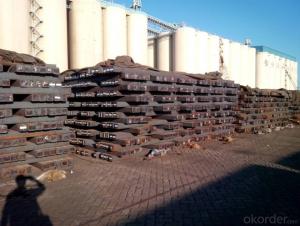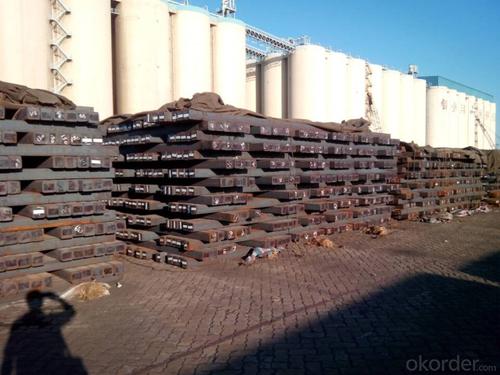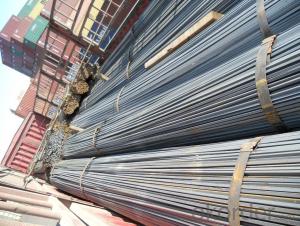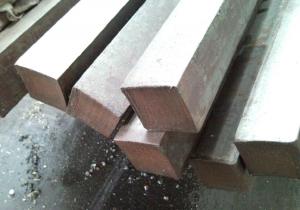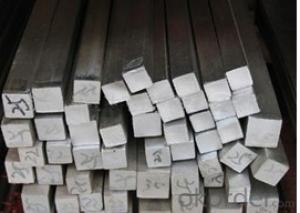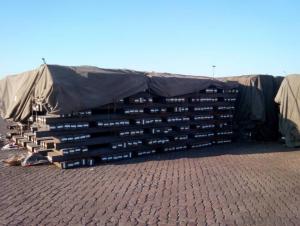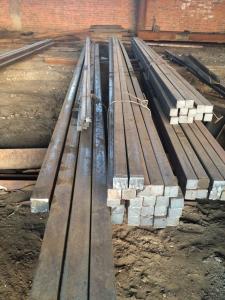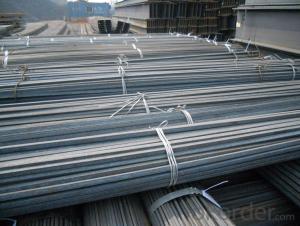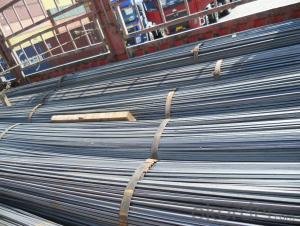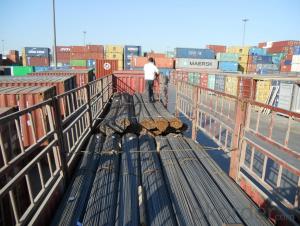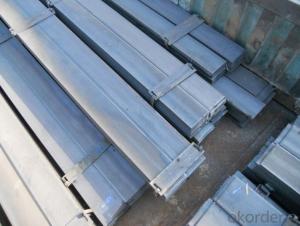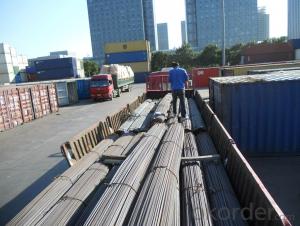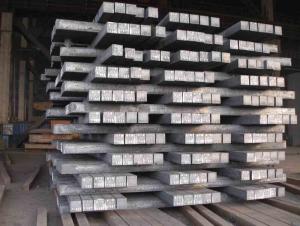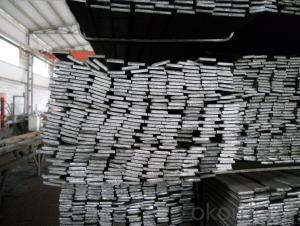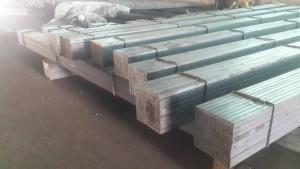Hot Rolled Square Carbon Steel Bar Material Q235
- Loading Port:
- Qingdao
- Payment Terms:
- TT or LC
- Min Order Qty:
- 25 m.t.
- Supply Capability:
- 3000 m.t./month
OKorder Service Pledge
OKorder Financial Service
You Might Also Like
Product Description:
OKorder is offering Hot Rolled Square Carbon Steel Bar at great prices with worldwide shipping. Our supplier is a world-class manufacturer of steel, with our products utilized the world over. OKorder annually supplies products to European, North American and Asian markets. We provide quotations within 24 hours of receiving an inquiry and guarantee competitive prices.
Product Applications:
The Square Steel is normally used as structure steel.
Row material for other structure steel like steel angles, channels, I-beams, H-beams, etc…
Product Advantages:
OKorder's Hot Rolled Square Steel Bar Material Q195 are durable, strong, and resist corrosion.
Main Product Features:
· Premium quality
· Prompt delivery & seaworthy packing (30 days after receiving deposit)
· Corrosion resistance
· Can be recycled and reused
· Mill test certification
· Professional Service
· Competitive pricing
Product Specifications:
Length of a side(mm) | Theoretical weight(kg/m) | Length of a side(mm) | Theoretical weight(kg/m) |
6 | 0.283 | 32 | 8.04 |
7 | 0.385 | 33 | 8.55 |
8 | 0.502 | 34 | 9.07 |
9 | 0.636 | 35 | 9.62 |
10 | 0.785 | 36 | 10.17 |
11 | 0.950 | 38 | 11.24 |
12 | 1.13 | 40 | 12.56 |
13 | 1.33 | 42 | 13.85 |
14 | 1.54 | 45 | 15.90 |
15 | 1.77 | 48 | 18.09 |
16 | 2.01 | 50 | 19.63 |
17 | 2.27 | 53 | 22.05 |
18 | 2.54 | 55 | 23.6 |
19 | 2.82 | 56 | 24.61 |
20 | 3.14 | 58 | 26.4 |
21 | 3.46 | 60 | 28.26 |
22 | 3.80 | 63 | 31.16 |
23 | 4.15 | 65 | 33.17 |
24 | 4.52 | 68 | 36.3 |
25 | 4.91 | 70 | 38.49 |
26 | 5.30 | 75 | 44.16 |
27 | 5.72 | 80 | 50.24 |
28 | 6.15 | 85 | 56.72 |
29 | 6.60 | 90 | 63.59 |
30 | 7.06 | 95 | 70.85 |
31 | 7.54 | 100 | 78.50 |
Notes:
1, The theoretical weights in the list, base on the density of 7.85 g/cm3.
2, The numbers with mean that they are not regulars or we don’t offer them.
-List 2. The allowed tolerance of Square Steel:
Length of a side(mm) | Allowed Tolerance | ||
Group1 | Group2 | Group3 | |
5.5~7 | ±0.20 | ±0.30 | ±0.40 |
7~20 | ±0.25 | ±0.35 | ±0.40 |
20~30 | ±0.30 | ±0.40 | ±0.50 |
30~50 | ±0.40 | ±0.50 | ±0.60 |
60~80 | ±0.60 | ±0.70 | ±0.80 |
80~110 | ±0.90 | ±1.0 | ±1.1 |
110~150 | ±1.2 | ±1.3 | ±1.1 |
150~190 | ―― | ―― | ±2.0 |
190~250 | ―― | ―― | ±2.5 |
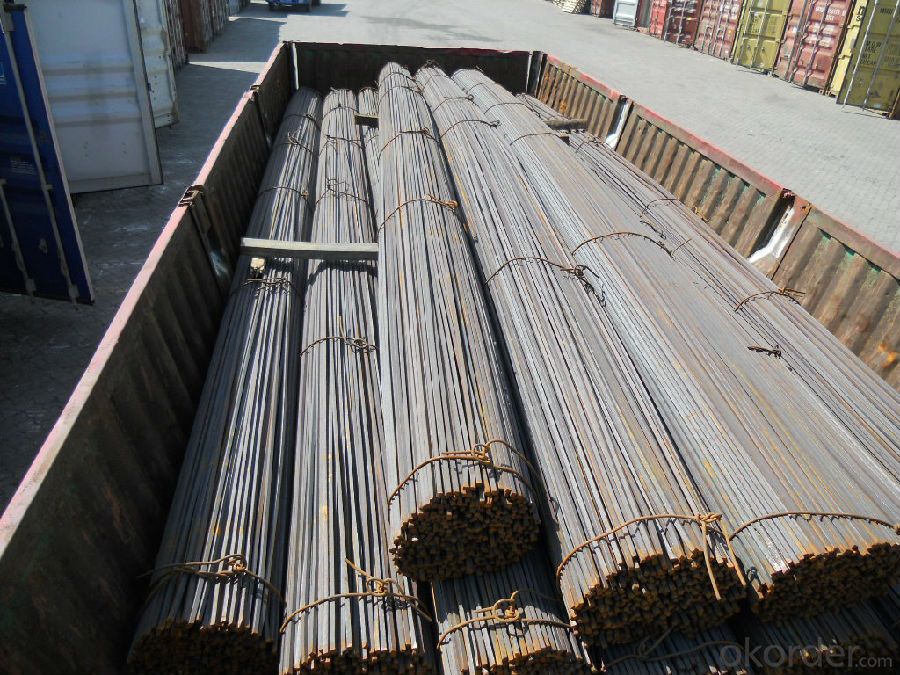
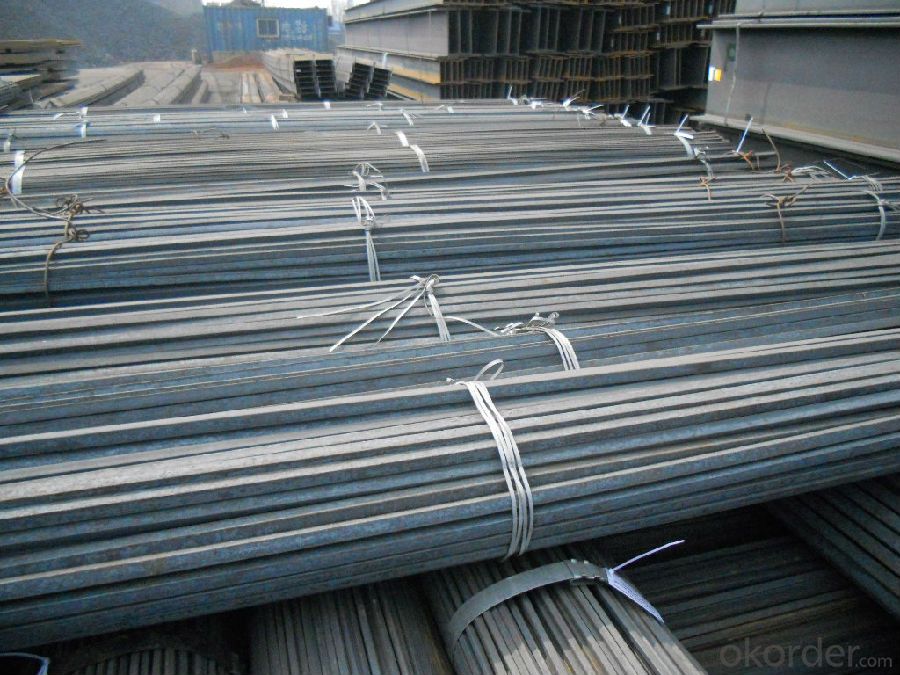
FAQ:
Q1: Why buy Materials & Equipment from OKorder.com?
A1: All products offered byOKorder.com are carefully selected from China's most reliable manufacturing enterprises. Through its ISO certifications, OKorder.com adheres to the highest standards and a commitment to supply chain safety and customer satisfaction.
Q2: How do we guarantee the quality of our products?
A2: We have established an advanced quality management system which conducts strict quality tests at every step, from raw materials to the final product. At the same time, we provide extensive follow-up service assurances as required.
Q3: How soon can we receive the product after purchase?
A3: Within three days of placing an order, we will begin production. The specific shipping date is dependent upon international and government factors, but is typically 7 to 10 workdays.
Q4: What makes stainless steel stainless?
A4: Stainless steel must contain at least 10.5 % chromium. It is this element that reacts with the oxygen in the air to form a complex chrome-oxide surface layer that is invisible but strong enough to prevent further oxygen from "staining" (rusting) the surface. Higher levels of chromium and the addition of other alloying elements such as nickel and molybdenum enhance this surface layer and improve the corrosion resistance of the stainless material.
- Q: How do you use a steel square to determine the angle of a cut?
- To use a steel square to determine the angle of a cut, you need to follow a few simple steps. First, ensure that your steel square is clean and free from any debris or dirt. Place the base of the square firmly against the edge of the material you want to cut, ensuring that it is aligned properly. Then, use the markings on the square to find the desired angle. The most common angle measurements on a steel square are 45 degrees and 90 degrees, but some squares may have additional markings for other angles. Once you have identified the angle, draw a line along the edge of the square using a pencil or marker. This line will serve as a guide for your cut. Finally, using a saw or other cutting tool, carefully follow the marked line to make your cut at the desired angle. It is important to maintain steady control and ensure the saw is properly aligned with the marked line to achieve an accurate cut.
- Q: Can a steel square be used for checking the levelness of a surface?
- Typically, a steel square is not employed to verify the levelness of a surface. Commonly known as a carpenter's square or a try square, a steel square is mainly utilized in woodworking and construction to measure and mark right angles. It is not specifically engineered or adjusted to determine levelness. To assess the levelness of a surface, it is more suitable to use a level tool like a spirit level or a laser level. These tools are specifically designed to indicate if a surface is perfectly horizontal or vertical, using a bubble or laser line respectively.
- Q: Can a steel square be used for measuring lengths as well?
- No, a steel square cannot be used for measuring lengths. A steel square, also known as a framing square or carpenter's square, is primarily used in carpentry and woodworking for measuring and marking angles, not for measuring lengths. It has a right angle shape with a long arm and a shorter perpendicular arm, which are used to check and mark 90-degree angles. To measure lengths accurately, a measuring tape or a ruler would be more appropriate.
- Q: Can a steel square be used for measuring the pitch of a roof?
- Yes, a steel square can be used for measuring the pitch of a roof. The steel square has markings and angles that can help determine the slope or angle of the roof, making it a useful tool for measuring pitch.
- Q: How do you use a steel square to lay out a birdsmouth cut?
- To use a steel square to lay out a birdsmouth cut, you will first need to determine the dimensions required for the cut. A birdsmouth is a notch or cutout typically made on the top edge of a rafter to allow it to sit securely on a wall or other supporting structure. Here's a step-by-step guide on how to use a steel square for this purpose: 1. Measure and mark the desired depth of the birdsmouth cut on the rafter. This is typically determined by the thickness of the supporting structure it will be resting on. 2. Position the steel square on the rafter, aligning the longer leg (blade) with the edge of the rafter. Ensure that the shorter leg (tongue) extends beyond the width of the rafter. 3. Slide the square along the rafter until the desired length of the birdsmouth cut is reached. The point where the blade meets the rafter edge should align with the mark indicating the depth of the cut. 4. Hold the square firmly in place and use a pencil or a scribe to trace along the edge of the tongue. 5. With the square still in position, rotate it so that the tongue is now aligned with the edge of the rafter, and the blade is extending beyond the width of the rafter. 6. Slide the square along the rafter until the desired length of the cut is reached, ensuring that the point where the tongue meets the rafter edge aligns with the mark indicating the depth of the cut. 7. Once again, hold the square firmly in place and use a pencil or scribe to trace along the edge of the blade. 8. The resulting lines should form an L-shape on the rafter, representing the outline of the birdsmouth cut. 9. Using a saw, carefully cut along the traced lines to create the birdsmouth. Take care to stay within the lines and maintain the desired dimensions. By following these steps, you can effectively use a steel square to lay out and cut a birdsmouth, ensuring a precise fit for the rafter onto the supporting structure.
- Q: How do you use a steel square for making precise 45-degree angle cuts?
- Achieving precise 45-degree angle cuts using a steel square involves the following procedure: 1. Prioritize cleanliness and ensure that the steel square is free from rust or debris. This will guarantee accuracy during the cutting process. 2. Position the steel square on the material to be cut, ensuring that the longer side of the square aligns with the material's edge. For instance, when cutting wood, align the square with the wood's edge. 3. Securely hold the square in place to prevent movement while working. 4. To create a 45-degree angle cut, position the material at a specific angle against the square. Utilize the inner corner of the square as a guide. Align one edge of the material with the inner corner, establishing a 45-degree angle between the square and the material. 5. Once the material is correctly aligned, use a pencil or marking tool to trace along the square's edge. This will provide a precise line indicating the cutting location. 6. After marking the line, cautiously remove the square and place it aside. Ensure the material is securely held, preventing any movement during the cutting process. 7. Utilize an appropriate cutting tool, such as a saw or miter saw, to cut along the marked line. Adhere to safety precautions and employ the correct cutting technique for the chosen tool. 8. Cut slowly and accurately, following the marked line meticulously. This measured approach will maintain precision and prevent errors. By adhering to these steps, one can effectively utilize a steel square to make precise 45-degree angle cuts. Remember to accurately measure and mark, and select the appropriate cutting tools to achieve desired outcomes.
- Q: How to hollow square steel welding
- Hollow square steel thin wall, should use special fixture precision counterparts, and retain the appropriate gap, in order to ensure the welding quality.
- Q: Can a steel square be used for making parallel lines?
- Yes, a steel square can be used for making parallel lines. A steel square is a versatile tool that consists of a straight edge and a right angle. By aligning the straight edge of the steel square with a reference line, it can be used to draw another line parallel to the reference line. The right angle of the steel square ensures that the new line is perpendicular to the reference line, thereby creating parallel lines. This makes the steel square a useful tool for various applications such as carpentry, construction, and drafting.
- Q: Can a steel square be used for door installation?
- Yes, a steel square can be used for door installation. A steel square is a versatile tool that can be used to ensure accurate measurements and angles during door installation, helping to ensure a properly aligned and level door.
- Q: How do you use a steel square to measure and mark 90-degree angles?
- To use a steel square to measure and mark 90-degree angles, start by aligning one edge of the square against the edge of the material you want to mark or cut. Ensure that the square is held firmly in place. Next, make sure that the long side or blade of the square is perpendicular to the material edge. This ensures that you will be measuring and marking a perfect 90-degree angle. Now, take a pencil or a marking knife and trace along the inside edge of the square's blade. This will leave a precise mark on the material, indicating the 90-degree angle. If you need to measure and mark multiple 90-degree angles, you can simply repeat the above steps, ensuring that the square is properly aligned each time. Remember to always double-check your measurements and marks before proceeding with any cutting or construction work to ensure accuracy.
Send your message to us
Hot Rolled Square Carbon Steel Bar Material Q235
- Loading Port:
- Qingdao
- Payment Terms:
- TT or LC
- Min Order Qty:
- 25 m.t.
- Supply Capability:
- 3000 m.t./month
OKorder Service Pledge
OKorder Financial Service
Similar products
Hot products
Hot Searches
Related keywords
